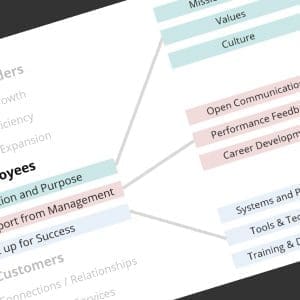Much has been written of the power of the Internet of Things to introduce disruption into established industries – and this is often where the conversation goes when introducing the idea of slapping sensors on mature machines. But are you really digging into the breadth and depths of this potential disruption? Consider these examples, culled from conversations over the last six months.
Product Management and Finance: Following the Ted Levitt dictum (the customer does not want a drill bit, they want quarter-inch hole), we have to think of our customers differently. They do not want to buy our widgets, they are trying to solve a particular problem – and adding sensors and connectivity to our type of widget can and should enable the customer to solve this problem predictably and reliably. To date, many companies address the whole “predictably and reliably” challenge by engineering higher quality and durability into their products – and charge a premium price for doing so. The hurdle for our competitors is high, because our widgets last longer than theirs.
But (says the competition) what if I could predict when my widget will fail – and send out a replacement before it gets to that point? I would, in fact, be “loaning” these widgets to you; you pay a monthly fee for this “ability to [solve this problem] on demand”, and I guarantee that the next time you use this machine, it will do the job. Since my Smart, Connected widget is monitoring the right variables and sending data to my predictive analytics engine, I can schedule a service call to swap out an aging widget with a new one, right before it chooses to fail.
Now, all some smart finance person has to do is figure out the math – can you charge a monthly fee that will cover these costs? And can my brilliant product management team (engineering, marketing) develop a cheaper, lower quality product that only has to work the next time I use it?
And – could our competitors, who can’t match the quality of our widgets, switch to this approach?
Marketing and Customer Acceptance: A challenge for the Marketing folks as well; could we convince the customer base to change out their understanding of how these widgets work in the grand scheme of things?
For some product classes, the customer base will be ready and open for this type of change. Not because the tech is cool or they desperately want an app that tells them their factory equipment has passed 10000 steps; rather, this kind of sounds like vendor-managed or consignment inventory, so it shouldn’t be that big of a leap. However, I have talked with product managers about customers in this or that specific market that are “slow to change”, and “have never thought of [widgets] in that way”. Industrial markets are not readily converted to the fast-twitch product swapping mentality of consumer products; this may be a larger challenge than finding the right sensor or designing a nice looking web portal.
Operations Management: But here’s where I think the really impactful change could happen – how are we going to measure our ongoing success? Not just the “simple” stuff like market share or earnings growth – I’m thinking KPIs like Unit Cost Variance, Throughput, On-Time Delivery, and Productivity. In the industrial world, so many of our operational management has been designed around metrics and processes that support making, selling, and shipping things – discreet events where success means the truck left the dock on time, with the right stuff.
But in the service management world, the operational metrics are quite different – a much bigger focus on service availability and timeliness, customer interaction, etc. Ok, it’s not a complete shift – we will still have to manage inventory of hot swappable parts on delivery trucks, etc. But how do you pull forward sales from next month to make your quarter? And how do you think about absorption when your predictive metrics change the demand every month?
Metrics, measurements, and management styles can be redesigned, for sure – but did you consider that when you started planning for all of this “smart, connected” stuff?
<aside> Some interesting pro and con on the whole measurement thing …
</aside>
13 July, 2015






Comments (0)